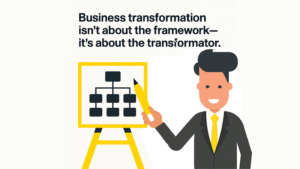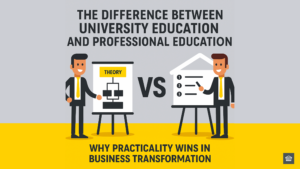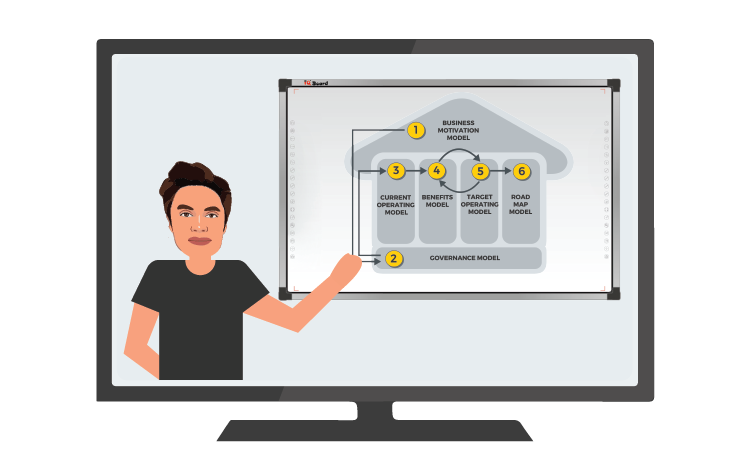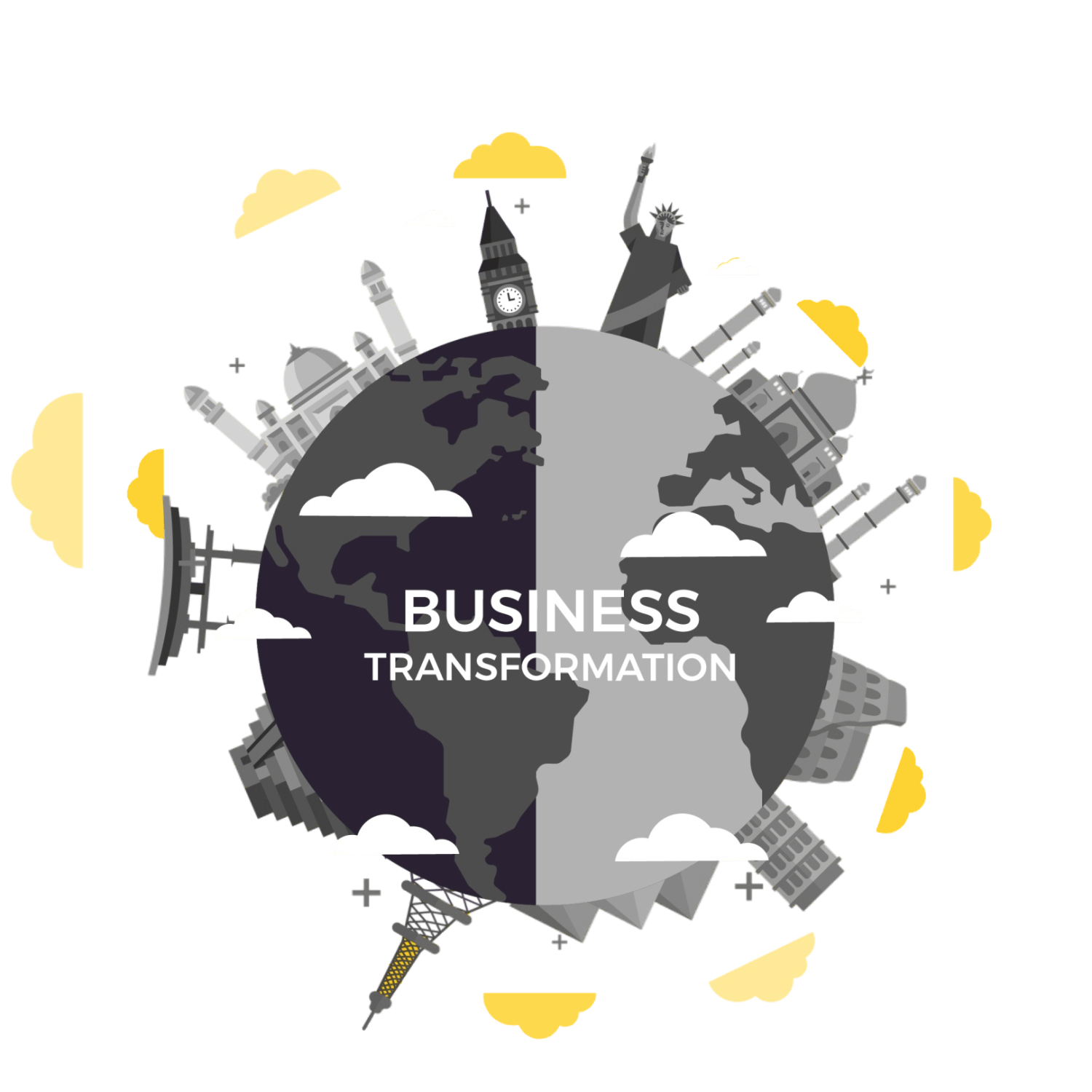In part 3 (of 3 parts) ‘Should a company hire a professional consultant or manage their business transformation internally?’, we discuss the ‘five (5) questions companies forget to ask now they have made a decision to hire a professional consultant’.
In part 1, we addressed the questions that a company has when they are deciding whether they go it alone, or bring in hired help. If you missed it, check it out here.
In part 2, if you are a company looking to hire a professional consultant to help you with your business transformation instead of do it internally, we discussed the top 4 mistakes companies make with that decision. If you missed that, check it out here.
Now, if you are still deciding whether you should bring in a professional consultant or manage your business transformation internally, or you have made the decision, there are lots of questions that companies and clients have to help with that decision.
The key questions however, are often the missed ones, so we put together the list.
Here is the five (5) questions companies miss (but should ask) from the consultant or consultancy to manage your business transformation (click the link to skip to the section below):
NB: Click the images to expand 📸
1. How can you prove the skills of the Consultant?
This is the hardest part. How do you know the skill, or level of skill of the Consultant or Consultancy?
There are References, which are usually the best. What better than a first-hand account of how the Consultant went and how they were to work with?
The problem with that, is the best kind is straight from the horses-mouth e.g., the Company (prospective Client) calls the Consultants past Client. The problem is that is often met with a bit of skepticism.
So “the past Client is going to tell how bad it was to work with the Consultancy? Is the past Client going to give a fair and accurate account of what it was really like, or am I going to get a watered down version that the Consultancy themselves has already worded them up for?” Hmm..
Most prospective clients will not want to call, so they don’t. So, what’s next.
Case Studies
Case Studies are great. They show how the Consultancy solved a specific problem that is (ideally) similar to the prospective Client, the process they used to solve it, and the results they were able to obtain.
The closer to the prospective Client, the greater the perceived ability or likelihood the Consultant/Consultancy can achieve that for the prospective Client.
No brainer! But here’s the catch, which as a prospective Client, you need to ask.
Most good consultants have already left big organisations and started their own thing, but their good work that they delivered is still being sold to new clients, long after they have gone.
As a prospective Client, you need to ask “are the consultant(s) that delivered that transformation still around?”
You might be told, “no, but we follow the same approach”.
Yes, the framework is important, but as we discussed in Part 1, its more the skill of the Business Transformator using that framework applying their different skills (technical, business, people and leadership) while using that framework that’s important. If you missed that part 1, go here.
Business Model
Related to skills, is Business Model, specifically “how does the (Consultants) business model work? Who is going to work on the project?
Is the guy you are talking to ‘pre-sales’ – they come in for the pitch then disappear, fly off to another part of the world to deliver the same presentation and pitch, and then the Interns and/or First-year Graduates rock up, and “land and expand”? – i.e. run around telling the client they are sick, and only they can help, but careful not tell them they are very sick, otherwise they won’t be able to afford their bill (I wrote about that here).
You want to be wary of that, so you need to ask the question.
Need to map your business model? Download the FREE Business Model Canvas template here.
2. Are you an Independent Consultant or not?
This question is to do with whether the Consultant is associated or independent from a Vendor or Software provider.
If you use a software vendor e.g. Oracle, Salesforce, Microsoft etc., don’t be surprised if or when they push the solution first (i.e. their software) or force you down the ‘solution’ route first.
Steve Jobs is famous said “You have got to start with the customer experience, and work back toward the technology. Not the other way around. You can’t start with the technology and try to figure out what to sell. I have made this mistake probably more than anybody else. I have got the scars to prove it”.

6-Steps to Business Transformation Success
WHAT THE TOP 30% OF ORGANISATIONS KNOW THAT YOU DON’T 👉

👏 ‘You have got to start with the customer experience, and work back toward the technology. Not the other way around. You can't start with the technology and try to figure out what to sell. I have made this mistake probably more than anybody else. I have got the scars to prove it” 💼🫵 #SteveJobs #CustomerFirst #Business-led #BusinessTransformation #HOBA
Steve Jobs Tweet
The Biggest Trap in IT - Vendor Lock-in
The other problem with a Vendor Consultant or Consultancy is this creates what is commonly called Vendor lock-in. The biggest trap in IT.
This is where you (the Client) are held at ransom when it comes to renegotiating contracts or renewals each year. It’s a great business model for them, not for you.
The solution: You want a vendor agnostic or independent Consultant or Consultancy. One that either works with your (IT) team or independent from the software vendor itself.
Once you understand the problem, and therefore possible solution(s), which may include software, it is then you would assess what potential (software) is suitable before engaging them, but not before.
If you engage the software vendor before you have determined the problem, you will be just sticking the ‘cart’ (i.e. technology) before the horse (the Business).
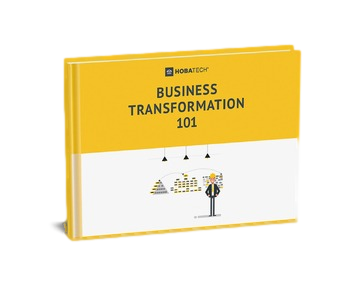
👏 "The other problem with a Vendor Consultant or Consultancy is this creates what is commonly called Vendor lock-in. The biggest trap in IT. 🔐🫢 #BusinessTransformation #RedFlags #BusinessTransformationFailure #HOBA
Heath Gascoigne Tweet
3. What is your (The Consultants) Approach
The next missing question is the ‘approach’, which is effectively ‘how will they deliver the project’?
TIP – if it looks complicated and busy, and takes at least 1 hour to explain it. That’s your red flag. You would be wise to walk away now and dodge a silver bullet.
If they can’t give you an elevator pitch how to do that, don’t be surprised when the elevator seems to never end when they will justify to you why the project is taking so long.
It is taking so long because they will tell you they have to complete each and every step along their process. They of course will forget to mention that there is no value or benefit of completing each and every step for you.
It is however, of value and benefit to them of course to complete each and every step of their process, even it has no value for you.
The reason it is ‘of value’ to them, is they are going to charge you for that time, and materials.
The oldest trick in the Consultant/Consultancy book – The War Room
What they will also do, is stick each and every diagram and model and the most colourful pages from every power-point presentation pack they produce on a wall, and celebrate the ‘hanging up on the wall’ with great bravado of these colourful diagrams and models as if that was the goal of the project and transformation itself.
This will all happen in a room they have hijacked, aptly and intentionally called ‘war room’ just off the project floor, to further reinforce the notation that you and them, are at war, with the ‘invisible enemy’, be that ‘the future’, or ‘culture’, or ‘time’, and you “must act now, for the ‘burning platform’ you’re on, they tell you is about to collapse under you.
This is like the Y2K bug off the year 2000, that never eventuated, but it did make healthy profits for consultancy and technology companies forcing clients to install, and upgrade to new, often vapour-ware technology and applications for a virus that didn’t exist (this sounds familiar?).
Note – hanging diagrams and models on a wall, in a room called ‘war room’ is an old consultant/consultancy trick. It’s a distraction.
Looking to transform your Organisation with less stress & less time? Search no more!

- Introductory Offer
- Huge Savings. On Sale Now!
👏 "The war room. The oldest trick in the consultancy handbook. Hanging diagrams and models on a wall and celebrated with great bravado as if they were the intended outcome of the transformation (and not the transformation itself). It is a distraction” 🔐😱 #BusinessTransformation #RedFlags #BusinessTransformationFailure #HOBA
Heath Gascoigne Tweet
What is important is the “work”, that the work is visible, everyone understands it, and it’s getting done. As the work is getting completed, it’s marked off, and celebrated when milestone are reached. That builds comradeship, collaboration and momentum. Everything else is theatre.
Our preferred method of providing visibility to Clients is via Kanban. Check out our other post on how to use Kanban to manage your business transformation here.
4. What are the Deliverables?
This question is about ‘what will they actually produce?’
Prospective Clients aren’t looking to see how Consultants previous clients or others run their business, or what problems they have.
Prospective Clients are interested on how the Consultant works, whether the process they say they are going to use, is actually the process they, that they deliver the results. They are looking for proof.
One of the key deliverables that is often missed is the deliverables at the end of the project. The document that provides the evidenced and allusive Knowledge Transfer.
Knowledge Transfer
This Knowledge Transfer should look like a line item in the Statement of Work (SOW), or Contract between the Consultant/Consultancy and the Company (the Client).
It will involve 2-3x 1-hour long prepared Knowledge Transfer sessions, providing Knowledge Transfer documentation to support the transfer.
In these sessions, the Client should expect to be walked through the work that was done, the decisions that were made, and status of where it got too, and any outstanding actions required (if any). It would also contain links to the shared repository/directory to locate all the created documentation, including how to access it, and navigate it.
This is undoubtably more work for the Consultant, but as a good corporate citizen, and true partner to the Client, if it’s not there, you need to add it.
Looking for the Best Training to deliver your Business Transformation? Search no more!
- 30-Day Money-Back Guarantee
- Risk FREE

👏 "One of the key deliverables that is often missed is the deliverables at the end of the project. The document that provides the evidenced and allusive Knowledge Transfer." 🔐😱 #BusinessTransformation #RedFlags #BusinessTransformationFailure #HOBA
Heath Gascoigne Tweet
5. Can we do a Pilot Project?
As part of the Project Proposal, as a risk management strategy for both parties, there needs to be a Pilot Project.
A Pilot Project is a small project that will deliver tangible value for the Client, and address one of the big problems the full project is scoped to deliver.
This Pilot Project will provide both parties the opportunity to see how they work together, how the Consultant works, according to the ‘approach’ they proposed (and ideally closely mirroring those case studies they provided)!
If the Pilot Project delivers the planned benefits, as planned and the working relationship was beneficial for both parties, then both parties would make a decision to continue on with the full transformation or end the relationship there.
What usually happens with the big projects is Consultancies make big pitches that are all or nothing. No ‘dipping the toe in to test the water’, so what happens is the potential client says ‘You know what, it’s too risky. We’ll manage it ourselves”.
That is not a bad decision, and is neither right or wrong. There are of course implications with that, and questions the Company needs to ask about themselves. See Part 1 which covered those questions.
Conclusion
There are common questions Companies ask Consultants when they hire them to manage their business transformation, but there are also key ones that are missed.
Here is 5 Questions Companies miss when hiring a professional Consultant to manage their Business Transformation:
- How can you prove the skills of the Consultant?
- Are you Independent or not?
- What is your Approach?
- What are the Deliverables?
- Can we do a Pilot Project?
If you want help with your business transformation, you can reach out via this form to work with a professional consultant.
If you want 1-on-1 coaching, to help you through your business transformation, see our coaching here.
If you have any more questions, view our frequently asked questions (FAQs) section here.
Thank you for reading this!
Sincerely,

Heath Gascoigne
P.S. If you want to join our Business Transformator community of like-minded Business Transformators, join the community on the Business Transformator Facebook Group here.
P.P.S. If you want to learn more about business transformation, check out The Business Transformation Playbook here.
For more information, visit https://www.hoba.tech
Looking to transform your Organisation with less stress & less time? Search no more!

- Introductory Offer
- Huge Savings. On Sale Now!




